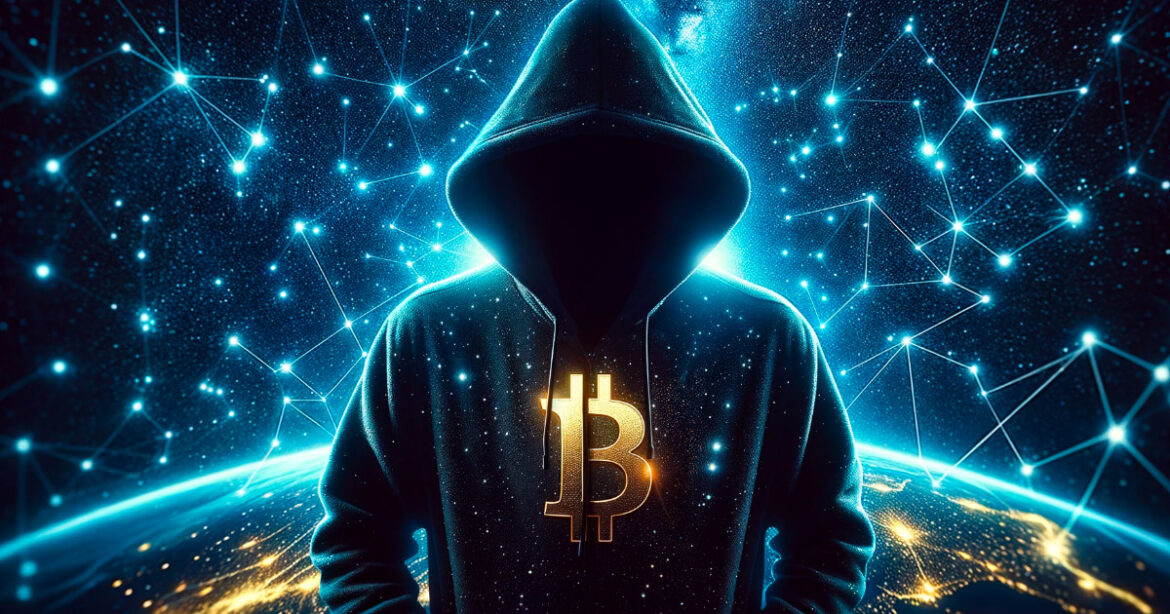 After Judge James Mellor in the U.K. rendered his decision in the notable lawsuit initiated by the Crypto Open Patent Alliance (COPA) against Craig Wright, he concluded that Wright did not embody the persona of the pseudonymous Satoshi Nakamoto. Subsequently, Mellor enforced a worldwide injunction on Wright’s holdings, freezing assets valued at £6.7 million (approximately […]
After Judge James Mellor in the U.K. rendered his decision in the notable lawsuit initiated by the Crypto Open Patent Alliance (COPA) against Craig Wright, he concluded that Wright did not embody the persona of the pseudonymous Satoshi Nakamoto. Subsequently, Mellor enforced a worldwide injunction on Wright’s holdings, freezing assets valued at £6.7 million (approximately […]
Source link
Satoshi
Never-before-seen Satoshi Nakamoto emails add several details to Bitcoin’s origin lore

Private email correspondence between the pseudonymous Bitcoin creator Satoshi Nakamoto and an early contributor to the project, Martii Malmi, has shed further light on the origin story of the flagship crypto and its creator’s earliest thoughts about the future.
The emails were shared as evidence by Malmi in the Crypto Open Patent Alliance (COPA) vs. Craig Wright trial as part of his testimony. The trial has been ongoing since the beginning of February and will determine whether Wright’s claims of creating Bitcoin have any substance.
Never before seen emails
One group of emails concerns early conversations between Nakamoto and Malmi, who contributed to the Bitcoin website and project code starting in 2009.
The emails provide insight into Nakamoto’s earliest expectations regarding Bitcoin and its future growth. Based on the emails, he was aware of the challenges Bitcoin could face regarding its legal status.
In one email, he wrote:
“There are a lot of things you can say on the sourceforge site that I can’t say on my own site … Even so, I’m uncomfortable with explicitly saying ‘consider it an investment’. That’s a dangerous thing to say and you should delete that bullet point. It’s OK if [Bitcoin users] come to that conclusion on their own, but we can’t pitch it as that.”
Whether cryptocurrencies and related offerings are investment contracts has been a critical point of contention between the industry and regulators, especially the US SEC.
After years of negative sentiment, Bitcoin has generally established itself as a commodity, with many considering it “digital gold.” This is primarily because it was initially issued through mining rather than investment contracts, although Bitcoin exchanges allowed users to purchase the crypto asset as early as 2010.
Incidentally, the emails describe the creation of one of the first Bitcoin exchanges. Nakamoto was looking for ideas for Bitcoin applications, and Malmi suggested a fiat-to-Bitcoin exchange.
Malmi went on to operate and register Bitcoinexchange.com, as was previously known. However, the latest emails show that Nakamoto had been a key advisor for the exchange.
Nakamoto advised Malmi to initially operate the exchange individually instead of creating an “eBay-type” or peer-to-peer exchange. He also dropped his plans to incorporate an auction system in favor of Malmi’s idea for a set exchange rate.
Furthermore, Nakamoto secured a donation of $3,600, of which $1,000 was allocated to support the exchange’s initial operations.
Other topics included anonymity, mining profits, fees
Nakamoto also created the early distinction between anonymous and pseudonymous — or partially anonymous — transactions. He anticipated controversy around transaction analysis, now a major business for firms like Chainalysis and Elliptic.
Nakamoto wrote at the time:
“I think we should de-emphasize the anonymous angle … we can’t give the impression [Bitcoin is] automatically anonymous. It’s possible to be pseudonymous, but … If someone digs through the transaction history and starts exposing information people thought was anonymous, the backlash will be much worse if we haven’t prepared expectations …”
Nakamoto and Malmi also discussed other topics, such as mining profits, power consumption, and Bitcoin’s potential environmental impact. In response to the environmental concerns, Nakamoto wrote:
“Ironic if we end up having to choose between economic liberty and conservation.”
He told Malmi that “unfortunately,” the proof-of-work consensus method was the only way to ensure that Bitcoin could “work” without a trusted third party. He added that it was “fundamental” in preventing double-spending.
Nakamoto did not seem fazed by the idea of significant energy being dedicated to the Bitcoin network. He wrote that even “if it did grow to consume significant energy,” it would not be as “wasteful” as the resources spent on “conventional banking activity.”
He further stated:
“The cost would be an order of magnitude less than the billions in banking fees that pay for all those brick and mortar buildings, skyscrapers and junk mail credit card offers.”
Nakamoto had also been acutely aware that electricity prices would affect mining profitability. His analysis at the time did not take into consideration how quickly the mining industry would evolve after the inception of ASIC devices. However, the emails show that he was mindful of the pace at which technology could develop over the coming years.
“The value of bitcoins would be relative to the electricity consumed to produce them … If you run a computational task 24/7, not letting it idle, it uses significantly more power … The extra wattage consumed goes straight to your power bill, and the value of the bitcoins you produce would be something less than that.”
Another topic discussed by the two developers included the possibility of using Bitcoin time-stamping data. Later, Nakamoto’s own Genesis Block transaction famously included a financial headline.
The emails also revealed discussions around Nakamoto’s decision to initially “hide the transaction fee setting” because he felt the ability to customize fees would confuse users. He predicted that adjustable fees would not be needed until the “far away future, if ever.”
Nakamoto’s prediction was partially correct — average Bitcoin transactions cost just cents before 2017, but the cost has risen significantly over the years, and transactions have regularly cost several dollars recently.
Emails could disprove Craig Wright’s claims
Critically, Malmi’s emails contradict some of the claims Wright has made over the years in his attempt to prove he is Nakamoto.
Wright said that Malmi first approached Nakamoto starting in February 2009. However, email records show that Malmi approached Nakamoto months later, in May 2009.
Another contradiction pointed out by Malmi was Wright misspelling Malmi’s first name in court, which would be uncharacteristic of Nakamoto, who had known him very well.
Yet another contradiction comes from the fact that Wright misidentified Malmi’s nationality even though emails contained a Finnish email address ending in .fi — and, in one case, Malmi’s full street address, including his country.
Wright also claimed in an earlier case that Malmi created the dark net marketplace Silk Road. This supposedly led Wright (as Nakamoto) to leave Bitcoin publicly in 2010.
In his witness statement, Malmi called these allegations “ridiculous and false.” He noted that Ross Ulbricht was convicted years ago for creating and operating the illegal dark web operation.
CryptoSlate previously covered email submissions between Nakamoto and Adam Back, which were filed as part of COPA’s broader efforts to disprove Wright’s claims in court.
Satoshi Nakamoto to Martti Malmi: The Correspondence That Shaped Bitcoin’s Early Days
 In a series of insightful emails between Martti Malmi and Satoshi Nakamoto, the foundational discussions shaping the early development of Bitcoin are revealed. These exchanges offer a rare glimpse into the critical thinking and technical challenges overcome in the cryptocurrency’s infancy. Blueprints of a Digital Revolution: Nakamoto’s Conversations With Sirius The dialogue initiated in May […]
In a series of insightful emails between Martti Malmi and Satoshi Nakamoto, the foundational discussions shaping the early development of Bitcoin are revealed. These exchanges offer a rare glimpse into the critical thinking and technical challenges overcome in the cryptocurrency’s infancy. Blueprints of a Digital Revolution: Nakamoto’s Conversations With Sirius The dialogue initiated in May […]
Source link
Satoshi Correspondence Revealed by Witnesses in Legal Clash Against Craig Wright
 In the unfolding lawsuit between the Crypto Open Patent Alliance (COPA) and Craig Wright, three key witnesses who had early interactions with Bitcoin’s creator, Satoshi Nakamoto, provided their testimonies. Among them were early Bitcoin developers Martti Malmi and Mike Hearn, as well as Adam Back, the creator of Hashcash, the proof-of-work (PoW) algorithm integral to […]
In the unfolding lawsuit between the Crypto Open Patent Alliance (COPA) and Craig Wright, three key witnesses who had early interactions with Bitcoin’s creator, Satoshi Nakamoto, provided their testimonies. Among them were early Bitcoin developers Martti Malmi and Mike Hearn, as well as Adam Back, the creator of Hashcash, the proof-of-work (PoW) algorithm integral to […]
Source link
Lightning Network app Wallet of Satoshi ends support for U.S. customers

Wallet of Satoshi, a popular wallet for use with with Bitcoin’s Lightning Network, announced the end of U.S. support on Nov. 24.
The company said that it had decided to remove its app from the U.S. and Google app stores and stop serving American users going forward.
The announcement only broadly described the reasons for the change, stating:
“This decision doesn’t come lightly. Our commitment to providing a secure, user-friendly, and compliant platform globally is unwavering. Our top priority is the safety and interests of our customers and our company.”
Wallet of Satoshi otherwise said that it hopes to eventually resume U.S. operations in the future. It added that U.S. users will continue to have access to funds that currently exist in their wallet, allowing for transactions and withdrawals.
Regulatory risk may be reason for takedown
Many members of the crypto community have speculated that, because of the U.S.-specific policy change, the decision is a response to American regulations.
Wallet of Satoshi is a custodial wallet, meaning that the provider centrally holds and manages funds on behalf of wallet customers. By contrast, the official Bitcoin wallet and various other Lightning Wallets are non-custodial wallets, meaning that they allow users to maintain complete control of their cryptocurrency balance on-chain.
Wallet of Satoshi’s centralized and custodial model likely puts the company at risk of regulatory enforcement, similar to cryptocurrency exchanges that manage funds on behalf of their users. Many such exchanges have recently faced regulatory action.
Prior to the announcement, some community members speculated that Google and Apple had banned the wallet from their respective app stores. However, Wallet of Satoshi’s latest update, combined with the fact that the app is available on international versions of each app store, suggests that the stores did not impose a ban.
Another commentator, Kevin Rooke, observed that the app recently experienced high volumes, handling over 1.1 million of Lightning transactions November.
Jameson Lopp demonstrates why Hal Finney could not have been Satoshi Nakamoto

Jameson Lopp, a significant figure in the Bitcoin community, published a detailed blog post on Oct. 21 dismissing the speculation that programmer Hal Finney was Satoshi Nakamoto.
The anonymity of Satoshi Nakamoto has been a matter of intrigue since Bitcoin’s (BTC) debut in 2009. Speculation has real-world implications, as evidenced by the experiences of Finney, who faced both extortion and a “swatting” incident in 2014, and Dorian Nakamoto, who was mistakenly identified as the creator by Newsweek the same year.
Lopp, however, dismissed the idea, citing critical pieces of evidence, including an incident from April 18, 2009. On this day, Finney, an avid runner, participated in a 10-mile race in Santa Barbara, California. During the exact time of Finney’s race, Satoshi Nakamoto was actively corresponding with early Bitcoin developer Mike Hearn. According to time logs and Lopp’s investigation, Satoshi sent an email just two minutes before Finney crossed the race finish line. This timeline, bolstered by third-party photographic proof of Finney’s participation, suggests the two individuals could not have been the same person.
Further, in Aug. 2010, when Satoshi was notably active online, Finney attended the Singularity Summit in San Francisco. Hal’s wife had commented on his deteriorating health due to ALS during this time, which significantly impeded his ability to type – casting further doubt on him being the active online presence of Satoshi.
Lopp also highlighted distinct differences in their coding styles, including preferences for indentation, comment formats, and naming conventions. Moreover, the two had inconsistencies in their viewpoints and knowledge, particularly related to certain foundational aspects of Bitcoin’s design and influences.
The examination of early Bitcoin logs presented another distinction. IP addresses from Jan. 10, 2009, showed that while Finney and Satoshi were connected, their IPs pointed to different locations in California with no discernible overlap.
While the quest to unmask Satoshi Nakamoto continues, Lopp’s research provides a comprehensive argument against the popular notion of Hal Finney being the elusive genius behind Bitcoin. The wider community awaits further insights or potential revelations on this enduring mystery.
Bitcoin pioneer Hal Finney can’t be Satoshi Nakamoto, new analysis suggests
Bitcoin pioneer Hal Finney was competing in a 10-mile race when Satoshi Nakamoto was responding to emails and transacting on Bitcoin, newly surfaced evidence has revealed.
For years, it has been speculated that the late Hal Finney, a computer scientist, created Bitcoin (BTC). He was the first person besides Satoshi to download and run Bitcoin’s software and was the first recipient of Bitcoin. Finney, however, denied the theory until his passing in 2014.
Jameson Lopp, a self-proclaimed cypherpunk and co-founder of Bitcoin custody firm Casa, doesn’t believe the speculation either. In an Oct. 21 blog post, Lopp shared new evidence that casts further doubt on the theory.
Racing to send an email
Lopp’s key evidence revolves around a 10-mile race in Santa Barbara, California, on Saturday, April 18, 2009.
According to the race data, Finney competed in the “Santa Barbara Running Company Chardonnay 10 Miler & 5K,” starting at 8:00 am Pacific Standard Time and finishing the race 78 minutes later.
The race, however, coincides with timestamped emails between Satoshi and one of the first Bitcoin developers, Mike Hearn.
Hal Finney was a legendary Cypherpunk, but he was not Satoshi.
Today I present my research to support that claim.https://t.co/gZVQv3QW0B— Jameson Lopp (@lopp) October 21, 2023
“It turns out that early Bitcoin developer Mike Hearn was emailing back and forth with Satoshi during this time,” explained Lopp, referring to archived emails that Hearn had released publicly in the past.
“What can we determine from all of this? Satoshi sent the email to Mike at 9:16 AM Pacific time – 2 minutes before Hal crossed the finish line.”
“For the hour and 18 minutes that Hal was running, we can be quite sure that he was not interacting with a computer,” Lopp added.

The Bitcoin transaction
Meanwhile, Lopp highlighted on-chain data to further support his claim.
Hearn’s emails show that Nakamoto sent Hearn 32.5 BTC in one transaction.
Lopp pointed to this transaction that took place on block 11,408, which was mined at 8:55 am PST — 55 minutes into Finney’s race.
Nakamoto confirmed this transaction — in addition to another one involving 50 BTC — in the 6:16 pm email, which Lopp iterates took place while Finney was still running.
Health issues
Meanwhile, analysis has also highlighted that Satoshi was working on code and posting on various forums during a time when Hal Finney’s battle with Amyotrophic Lateral Sclerosis (ALS) had already affected his ability to use a keyboard.
Lopp cited an Aug. 22, 2010 post from Hal Finney’s wife, Fran Finney, who said the couple attended the 2010 Singularity Summit in San Francisco on Aug. 14–15 and that Finney’s hard-fought battle with ALS slowed his typing from a “rapid-fire” 120 words per minute to a “sluggish finger peck.”
Bitcoin is better off with Satoshi’s identity remaining unknown. A human can be criticized and politically attacked. A myth will withstand the test of time.
— Jameson Lopp (@lopp) August 12, 2023
During that same time, Nakamoto performed four code check-ins and wrote 17 posts on various forums between Aug. 14–15, 2010, said Lopp.
Lopp also noted several differences in Finney’s Reusable Proofs of Work code compared with the original Bitcoin client code.
Related: Bitcoin pioneer Hal Finney talks ZK-proofs in 25-year-old unearthed footage
However, Lopp also acknowledged there could be objections to the so-called evidence.
Hearn published the emails in 2017 — seven years ex-post facto — and that it was around a time when other Bitcoiners lost trust in him over disagreements on how to scale Bitcoin.
Finney could have also scripted the emails and transactions in advance, or there could have been more than one Satoshi Nakamoto, Lopp said.
However, Lopp argues that Bitcoin’s creation came from a single developer:
“In all my time researching Satoshi, I’ve yet to come across any evidence suggesting it was a group. If it was a group, then they all operated on the same sleep schedule, consistent across code commits, emails, and forum posts.”
Hal Finney unfortunately passed away in August 2014 as a result of complications with ALS.
Magazine: Big Questions: Did the NSA create Bitcoin?







